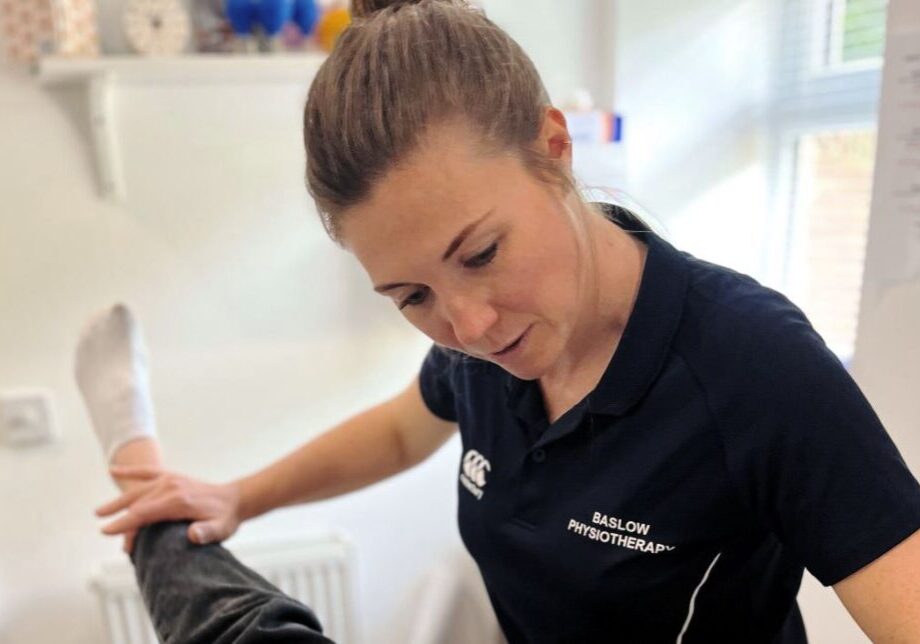The Power of Pelvic Health Physiotherapy

Pelvic health refers to the wellbeing and functioning of the pelvic region in the body. This includes areas such as the pelvic floor muscles, uterus (in women), bladder, urethra and rectum. These are areas of our bodies that we don’t often think about, never mind talk about… but did you know that pelvic floor ‘dysfunction’ is common and can affect up to 1 in 3 women at some point in their lives?
Read on to find out who is most commonly affected and what you can do to not only treat, but also prevent symptoms form occurring.
Client Testimonial:
"I can’t recommend Sarah highly enough. I saw her for a postnatal check following the birth of my first baby, to check out a few niggles and advise on returning to exercise. Sarah is lovely and immediately put me at ease. On my first visit she carried out a thorough assessment and provided personalised exercises to prepare me for returning to CrossFit and running. I booked a follow up appointment and am so pleased with my progress. I’m recommending Sarah to all of my friends with new babies, as these appointments have been absolutely invaluable to me. She’s great!" L P (Google review)
BOOK HERE
Understanding Pelvic Health
Pelvic health is generally something we only think about when we have to. There are times in our lives when pelvic health becomes more relevant, such as when girls start their periods, pregnancy and post-natally, around menopause, or for men if they have prostate surgery or have changes to their bladder habits for another reason.
Common issues and conditions related to pelvic floor dysfunction and the pelvic region include bladder incontinence, (this could be with coughing, sneezing, running or when you need to get to the toilet), pelvic pain (related to pregnancy within the lower back and back of the pelvis or internal pelvic floor pain with intercourse or tampon insertion, as an example), scar tension whether after a hysterectomy, c-section or perineal tear, and vaginal prolapse.
All of these conditions can have a significant impact on quality of life and the desire and ability to participate in social events, park runs, long car journeys and build intimate relationships for example.

What Is Pelvic Health Physiotherapy?
Pelvic health physiotherapy is a specialised part of physiotherapy that focusses on the assessment and treatment of the areas of the body as mentioned above. Key principles include understanding and connecting the integration between physical and mental health and positively optimising how these areas can affect each other. For example, pelvic pain is now known to have close relationships with levels of stress that we may be under, our ability to sleep or rest effectively and what we eat. It’s not just about doing pelvic floor (or kegel) exercises.
Benefits of Pelvic Health Physiotherapy
Pelvic health physiotherapy can be transformational to enable the best pelvic health you can have…for the rest of your life!
Key areas that you can benefit from include:
- Learning about how the pelvic floor complex functions and how best to activate these hidden muscles to stop unwanted bladder or bowel symptoms
- Understanding that the pelvic floor doesn’t work on its own and how breathing can be the key to unlocking issues you may be having
- Learning about how to optimise diet and fluid intake on bladder and bowel health
- The connection between the core and pelvic floor
- Returning to exercise after gynaecological surgery or pregnancy, when and how?!

Common Pelvic Health Issues
Urinary incontinence is a common pelvic health issue, affecting 1 in 3 women at some point in their lives. Men can also be affected by urinary incontinence associated to aging and commonly after prostate surgery. Pelvic organ (vaginal) prolapse is also common in women, especially after the age of 50.
Early intervention and having the appropriate knowledge and reassurance at the right time can be key in preventing symptoms from worsening but also, improving or curing the symptoms that you have.
For example, having a thorough assessment after having a baby, whether by caesarean section or vaginal delivery, can set you on the correct path for a faster recovery and stronger post-partum body. Getting any scars checked, assessing for tummy gap separation (rectus abdominal diastasis), pelvic floor examination and life style advice. This is a key time for key information that can make a big difference to returning with confidence to things you love.
The Pelvic Health Physiotherapy Process
Booking an appointment is easy. You can book online to see me or an appointment can be arranged via email, call or text messaging on 07923 601527.
All patients are asked to complete a health screening and consent form prior to coming and also a quick form to identify any specific pelvic health concerns that can be explored in more detail during your appointment.
Pelvic health physiotherapy involves a thorough history taking and finding out about all areas of your health and identifying specific goals. Following this, depending on what is discussed in the history taking a physical assessment will be carried out. This usually involves looking at how you’re moving, check for muscle imbalances, tummy gap separation and if appropriate and with consent a pelvic floor examination will be offered
Treatment varies depending on your specific problems but will often involve targeted exercise programme, hands on therapy, education and advice and additional product advice as required.
Lifestyle Tips for Pelvic Health

Practical tips for good pelvic health include:
- Try to keep your bowels soft and regular – straining can negatively affect the pelvic floor and even weaken it.
- Drink plenty of water and eat lots of fibre each day.
- Move…walk the dog, run, swim, do pilates, play with your kids at the park.
- Do regular pelvic floor exercises.
- Breathe – deeply. Diaphragmatical breathing can be the key to relaxation for our minds, reducing anxiety and tension within the pelvic floor too.
- Talk to other people about what you are going through. This could be your friend, sister, husband, or healthcare professional. Don’t suffer in silence and if you learn something awesome, share it!
Check out my top tips video:
Pelvic floor Exercises
Most people aren’t sure exactly where their pelvic floor muscles are or how to squeeze them, here’s a video from me on the foundations of connecting and starting to activate these muscles.
Remember this muscle group is part of the core system and these exercises are a basis for starting : ) if you have specific issues, ask and get specific advice.
Don’t just take it from me though, here are a few key messages from patients that have benefited from pelvic health physiotherapy here in Baslow:
“The use of the ultrasound during treatment helped visualise what was going on.”
“I was given an achievable exercise plan which was adapted week on week depending on how things were going!”
“I really enjoyed my sessions with Sarah and came out feeling so much better mentally and physically!”
“Sarah is a great listener and understands the other pressures of life, by giving exercises that fit in throughout the day and don't need lots of equipment.”
“The new mum MOT was amazing, so much more in depth than anything you get from your 6 week check”
These patients all had improved pelvic health symptoms and awareness, they were empowered by their ability to connect to their pelvic floor muscles and better understand why they were getting symptoms – they had more confidence overall!
Conclusion
Key points to consider:
- Pelvic health problems are common but not normal. We aren’t generally good at talking about these embarrassing issues, but help is available and often very successful.
- Pelvic health physiotherapy isn’t just about doing pelvic floor exercises, it’s so much more!
- Make your pelvic health a priority. If you want to return to doing something you love and aren’t sure how or when to do that, reach out for specific tailored advice.

If you feel we could help you
Book your first assessment
If you feel we could help you
Book your first assessment
